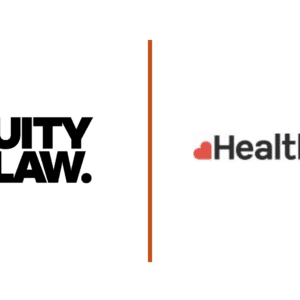Flexible Furlough Scheme – Immediate Questions
Key Contact: Claire Knowles
Author: Adam McGlynn
On Saturday morning the government released several updates to their Coronavirus Job Retention Scheme (the Scheme) guidance following Rishi Sunak’s announcements the previous week. We have sifted through the information to address some of your most immediate questions.
Can I place any more employees on furlough leave for the first time?
No. 10 June was the last day employees could be placed on furlough leave within the reimbursement parameters of the Scheme. This is because HMRC are introducing a break system at the turn of each month to simplify future monthly changes. Employees will therefore need to have completed their three-week minimum furlough leave by 30 June at the latest.
Is this different for employees returning from statutory parental leave (maternity, paternity, adoption or shared parental leave)?
Currently unclear. While the guidance states this may be an exception there is currently no guidance on what the rules might be or how employers should proceed.
Will a minimum furlough period be required from 1 July?
No. From 1 July there is no longer a requirement for furlough leave to be at least three weeks long. Furlough leave can be agreed for any shift pattern and any proportion of an employee’s usual hours.
If an employee is not working from 1 July does that mean they are furloughed?
No. Furlough is not an automatic status so from the 1 July it will be possible for employees to not work without being on furlough leave. To ensure the employee is on furlough leave, and their hours not worked are reimbursable under the Scheme, it is important that hours and shift patterns are agreed beforehand and evidenced in writing.
How does a flexible shift pattern affect my calculations?
Taking advantage of a flexible work schedule will mean that both (1) minimum wage obligations to employees; and (2) reimbursement entitlement from HMRC will be proportionate to the employee’s usual hours actually spent on furlough leave vs actually worked. This would involve dividing a claim period by their number of usual hours and then multiplying by the number of furloughed hours being claimed.
How are an employee’s usual working hours calculated?
An employee’s usual working hours are equal to their contracted working hours or, if appropriate, the higher of (1) their average working hours over the previous tax year; and (2) their average working hours in the corresponding month from the previous tax year.
Can an employee remain on furlough leave full-time?
Yes. When agreeing a forthcoming shift pattern an employee’s schedule can be 100% furlough leave and 0% hours actually worked.
How are claim periods changing?
So far employers have been restricted to a monthly claim period system. This will change from 1 July in the following ways:
- There will be a claim period break between 30 June and 1 July, even if the employee continues their furlough leave as before.
- Similar claim period breaks will occur at the turn of each month so claim periods must sit within calendar months from 1 July.
- Claims can be made during July for the period up to and including 30 June.
- Claims for periods from 1 July can only be submitted from 1 July.
- Claim periods must be at least seven days except for the first and last claim period within a calendar month.
Can claim periods overlap?
No. Claims must be made for all furloughed employees within the specified claim period and all reimbursable hours. No subsequent claim can overlap with a previous claim period so if some time is missed it cannot be claimed at a later date.
Can I still claim in advance?
Yes. Claims can still be submitted in advance of a claim period or before a claim period expires. However, if plans change or an employee does not work to the agreed schedule an employee will not be able to claim any increase in entitlement and may have to repay any overpayment they claimed.
Do employers still need to pay 80% of a furloughed employee’s wages up to £2,500?
Yes. Irrespective of upcoming reimbursement reductions from HMRC employers will still need to pay employees on furlough leave a minimum of 80% of their wages up to a cap of £2,500 per month. However, from 1 July this 80% value and the £2,500 cap will only apply to the time spent on furlough leave as a proportion of the employee’s total usual hours within a claim period.
How is reimbursement entitlement changing over the coming months?
- From 1 July: There will be no change in Scheme grant value, however, employers will have to pay employees for hours actually worked.
- From 1 August: The Scheme grant value will remain at 80% of the employee’s wage, however, HMRC will no longer reimburse for NICs or pension contributions.
- From 1 September: The Scheme grant value will reduce the contribution towards an employee’s wage to 70%.
- From 1 October: The Scheme grant value will reduce the contribution towards an employee’s wage to 60%.
The Scheme is scheduled to end on 31 October 2020 though there will likely be a month’s period afterwards when employers can submit claims for October claim periods.
The upcoming changes provide the flexibility for businesses to transition back to normality the way that best suits them, however, the road is paved with legal and administrative complexities. To discuss changes to the Scheme, efficient cost management, or any other concerns, please contact our employment team.
Claire Knowles – Partner
Mark Alaszewski – Associate
Rebecca Mahon – Solicitor
Adam McGlynn – Trainee Solicitor






